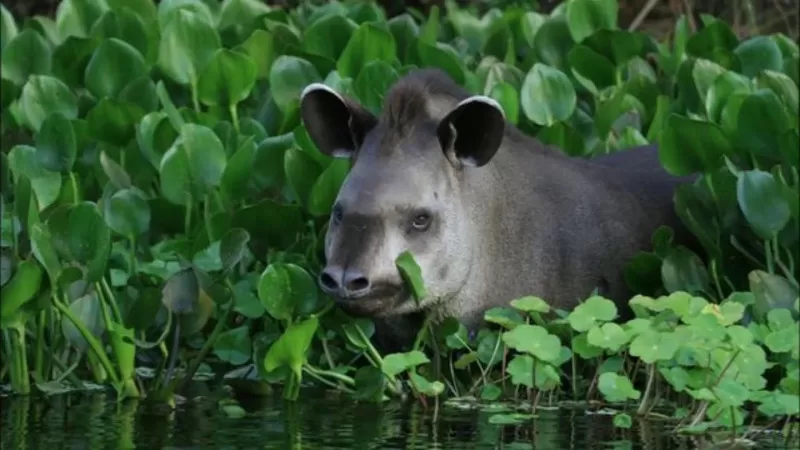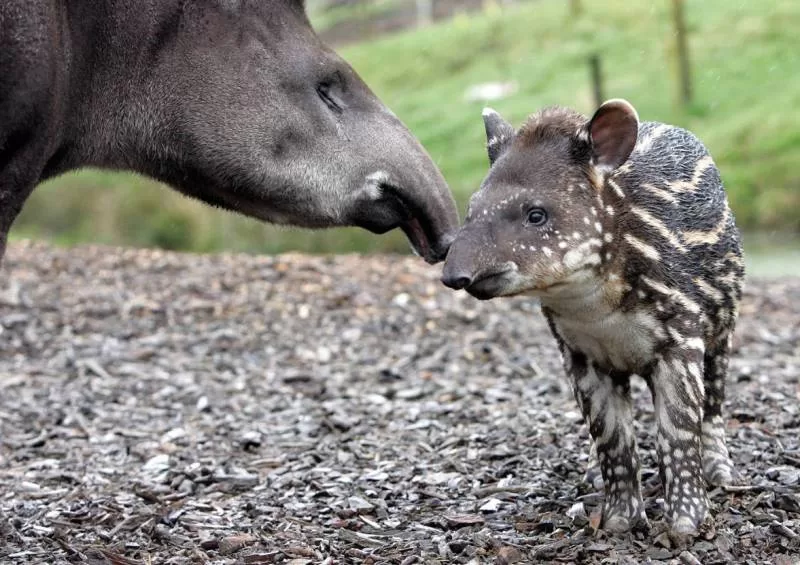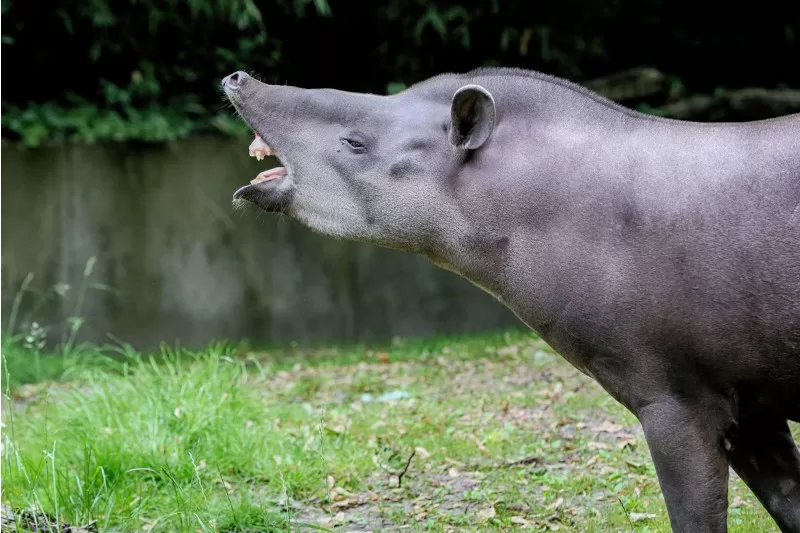Deep in the heart of the Peruvian Amazon, the tapir treads softly. These elusive creatures, often called “forest gardeners,” play a pivotal role in their habitat. Their unique habits and behaviors significantly shape the Amazon ecosystem.
Yet, despite their size and importance, many remain unaware of the tapir’s contributions. The Amazon’s dense foliage hides these nocturnal giants, but their impact is undeniable. This article seeks to shine a light on their ecological significance.
The tapir, with its prehistoric appearance, takes us on a journey back in time. As ancient wanderers, tapirs have an evolutionary lineage stretching back millions of years. Their distinctive snouts and robust bodies have adapted, enabling their survival in diverse habitats.
Interestingly, tapirs are not exclusive to the Amazon ecosystem. They have relatives spread across various continents, each showcasing unique adaptabilities. But it’s within the Amazon ecosystem that their role becomes profoundly significant. Here, they navigate the dense jungles, shaping the environment in subtle ways.
Fossils suggest that tapirs once roamed vast territories beyond their current habitats. From North America to Asia, these creatures left traces of their evolutionary journey. The variations in species showcase the dynamism of their adaptation processes, facing numerous climatic and ecological shifts.
In the Amazon ecosystem, tapirs are invaluable. Acting as seed dispersers, they ensure the continuous regeneration of the forest. Their diet, comprising various fruits and plants, facilitates the spread of many species. This natural activity supports biodiversity, ensuring a balanced and thriving ecosystem.
Close encounters with tapirs are rare, but possible. Manu National Park, for instance, offers glimpses of these majestic creatures in their natural setting. Sharing their home with animals like the Capybara, tapirs form part of a complex and interdependent web of life.
As we delve deeper into understanding tapirs, their evolutionary history underscores their resilience. It’s crucial for conservation efforts to recognize their significance. To safeguard the Amazon ecosystem, protecting tapirs is imperative. For those intrigued, consider venturing to places like Manu National Park, where the ancient wanderers tread softly, playing their age-old role in nature’s grand design.

Tapirs play a pivotal role in the Amazon ecosystem. As herbivores, their diet mainly consists of fruits and leaves. But their contribution goes beyond mere consumption. These creatures have earned the title of “forest gardeners” due to their impactful role as seed dispersers.
When tapirs consume fruits, they inevitably ingest seeds. As they move across the dense forest, these seeds are deposited in new locations through their feces. This seemingly simple act significantly aids in forest regeneration. By helping plants find new areas to grow, tapirs indirectly enhance the Amazon ecosystem’s overall health.
But why is this important? Peru’s biodiversity is vast and complex. To maintain the delicate balance of life, every species, plant, and animal has its role. Tapirs, with their seed dispersal habits, aid in maintaining this equilibrium. By ensuring a diverse range of plants thrive, they support countless other species that rely on these plants for survival.
Conservation efforts, recognizing the tapir’s role, prioritize their protection. Without tapirs, the Amazon ecosystem could face challenges in maintaining its lush, diverse landscape. As keystone species, their presence or absence can influence entire habitats.
As guardians of their domain, tapirs impact not just plant life but also water resources. Their paths often lead to water sources, ensuring clear paths for smaller animals. This role further cements their importance in the Amazon ecosystem.
Tapirs hold their own in significance. Their actions support a thriving, dynamic Amazon ecosystem. As we appreciate Peru biodiversity, let’s not forget these unsung heroes, quietly shaping the environment they call home.

The Amazon rainforest, teeming with life, faces numerous threats. Among its residents, the tapir, a gentle giant, encounters unique challenges. As the largest mammal in South America, its preservation is crucial.
Sadly, deforestation affects tapirs directly. Their habitats shrink, food sources decline, and migratory paths disrupt. As forests clear for agriculture or urbanization, tapirs lose their homes. Such loss not only threatens their survival but also impacts the broader Amazon ecosystem.
Poaching poses another grave threat. Hunted for their meat and hide, tapirs face human predators. The illegal wildlife trade endangers their already dwindling numbers, further pushing them towards the brink. Local and global initiatives work tirelessly to combat these threats. Through monitoring, rescue operations, and habitat restoration, they aim to ensure tapirs’ survival.
However, conservation isn’t just about addressing immediate threats. Education plays a vital role. By raising awareness, communities can become stewards of their natural heritage. Empowered with knowledge, locals can lead conservation efforts, ensuring the Amazon’s treasures, like the tapir, remain for future generations.
Yet, to truly appreciate these efforts and the majesty of the tapir, firsthand experience is unparalleled. Consider taking the Cusco to Manu National Park Peru Tour. Witness these gentle giants in their natural habitat. Or delve deeper into the Amazon’s heart with Manu Jungle Tours. Experience its wonders, understand its challenges, and become an advocate for its protection.

If you got any questions, please do not hesitate to send us a message. We reply within 24 hours!
+51 900 394 399
info@biomanuexpeditions.com
reservas@biomanuexpeditions.com
